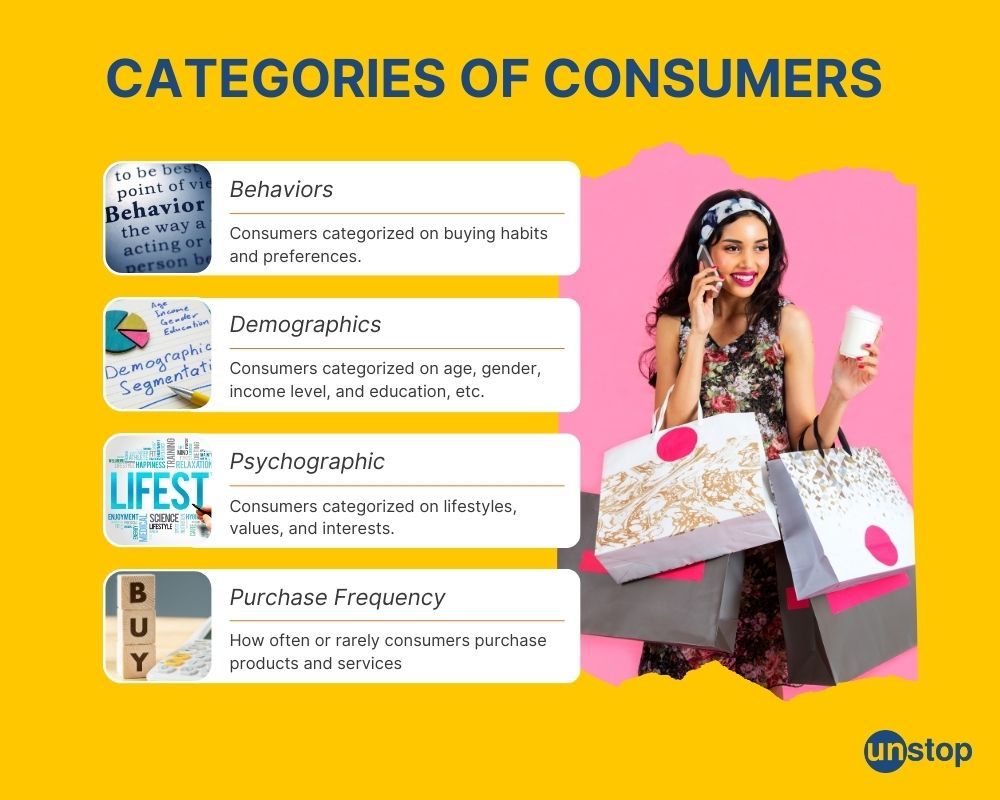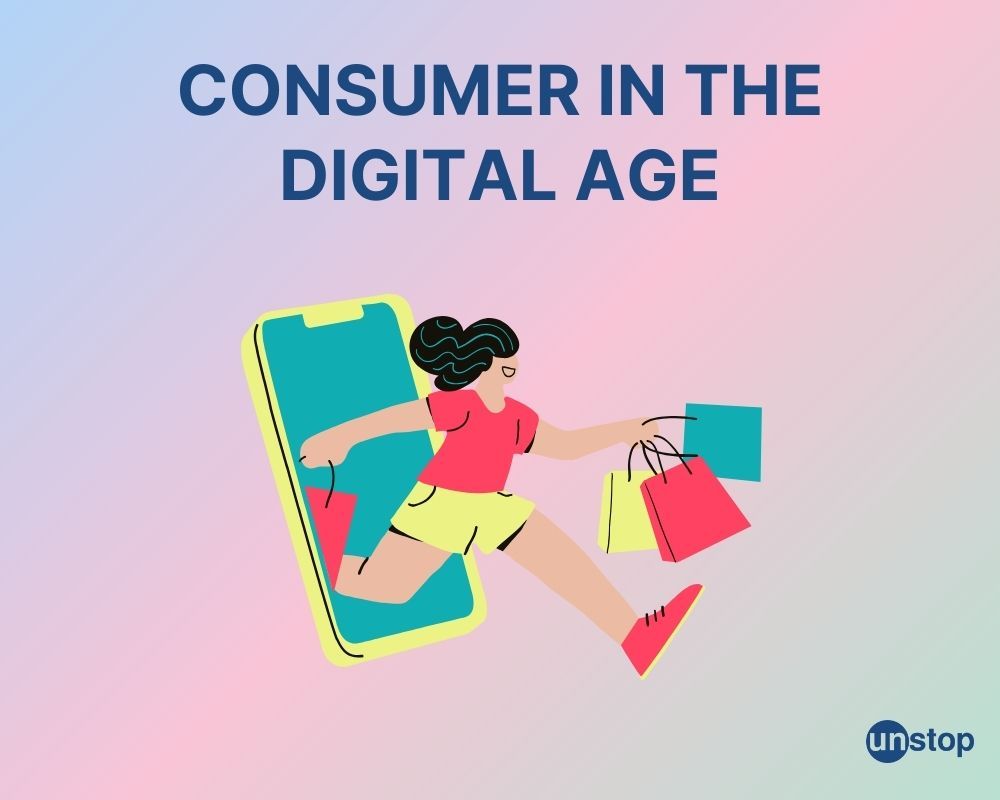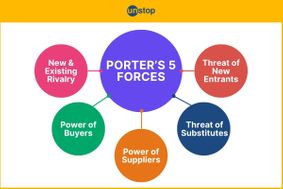- What is a Brand & Why is it Important?
- Elements of a Brand: Mission, Vision, and Values
- Types of Brands and their Significance
- Branding Strategies: Private, Multiproduct, and Mixed
- Brand Image and Its Impact on Perception
- Building a Strong Brand
- Frequently Asked Questions
- Understanding Brand Equity: Definition and Elements
- Importance of Brand Equity
- Evolution Of Brand Equity In The Digital Age
- Brand Equity in the Global Marketplace
- Measuring Brand Equity: Metrics & Methods
- Managing Brand Equity: Salient Elements
- Building & Managing Brand Equity: Best Practices
- The Future of Brand Equity
- Conclusion
- Frequently Asked Questions
- What is Brand Management?
- Importance of Brand Management
- Benefits of Effective Brand Management
- Principles of Brand Management
- Strategies for Successful Brand Management
- Brand Management vs. Marketing
- Conclusion: The Power of Brand Management
- Frequently Asked Questions
- Importance of Brand Image in Marketing
- Key Elements of a Successful Brand Image
- Brand Image vs. Brand Identity: Key Differences
- Measuring and Monitoring Brand Image
- Strategies for Maintaining and Enhancing Brand Image
- The Power of a Positive Brand Image
- FAQs
- What is Brand Awareness and its Importance?
- Benefits of Brand Awareness
- Brand Awareness Strategy: Some Tried & Tested Methods
- Some Creative Ways to Boost Brand Awareness
- Significance of Brand Awareness
- Conclusion
- Frequently Asked Questions
- Porter's 5 Forces Model: What Is It?
- Porter's 5 Forces Model: How To Use It?
- Common Barriers to Entry
- Evaluating Suppliers' Negotiating Power
- Understanding the Bargaining Power of Buyers
- Analyzing Threat of Substitute Products or Services
- Rivalry amongst Competitors (Old & New)
- Drawbacks of the Five Forces Model
- Conclusion
- Frequently Asked Questions
- How Well Do You Know Porter’s 5 Forces? Take A Quiz!
- What is Buying Motive?
- Types Of Buying Motives
- Importance Of Buying Motives
- Six Universal Buying Motives
- Identifying Buyer's Motives
- Utilizing Buying Motives In Sales
- Challenges In Interpreting Buying Motives
- Frequently Asked Questions (FAQs)
- 💸 Think You Know Buying Motives? Take A Quiz!
- Understanding the Elements and Importance of Brand Equity
- What are brand equity models?
- Comparing Keller's and Aaker's brand equity models
- Real-world examples of brand equity in action
- Strategies for building strong brand equity
- Key takeaways on brand equity models
- FAQs
- Mastered Brand Equity Models? Prove It!
- What Is Brand Positioning?
- The Importance of Brand Positioning for Businesses
- Creating A Brand Positioning Strategy: Step-By-Step Process
- Measuring the Success of Your Brand's Positioning
- Examples of Strong Brand Positioning in the Market
- Types of Brand Positioning Strategies
- Social Media Engagement: A Key Positioning Strategy
- What Makes a Good Brand Positioning Strategy?
- Conclusion
- Frequently Asked Questions
- Quick Quiz to Test Your Knowledge of Brand Positioning!
- Brand Personality: Definition & Importance
- How to Define Your Brand Personality?
- Choosing Your Brand Personality Attributes
- Dimensions of Brand Personality Framework: The Aaker Model
- Incorporating Core Values Into Your Brand Personality
- Examples of Brand Personalities in Action
- Conclusion
- Frequently Asked Questions
- Brand Personality Quiz– Let's Go!
- What is Brand Identity?
- What are the Key Components of Brand Identity?
- Importance & Benefits Of Brand Identity
- Importance of Unique Visual Elements in Brand Identity
- Communication Style and Tone of Voice in Brand Identity
- Steps on How to Create a Brand Identity
- Brand Identity Example- Coca-Cola
- Examples of Strong Brand Identities in Different Industries
- Consistency in Online and Offline Branding
- Conclusion
- Frequently Asked Questions (FAQs)
- Think You Know Brand Identity? Take A Quiz!
- Brand Identity Prism: Understanding The Concept
- Role Of Culture In Brand Identity Prism
- Brand Identity Prism: Visualizing The Sender & Receiver
- Benefits Of Brand Identity Prism
- Examples Of Brand Identity Prism In Action
- Brand Identity Prism: Key Takeaways
- Frequently Asked Questions
- Take This Brand Identity Prism Quiz!
- What is Market Segmentation?
- Importance of Market Segmentation
- The Market Segmentation Process
- Types of Market Segmentation
- Common Challenges in Implementing Market Segmentation
- Overcoming Challenges in Market Segmentation
- Conclusion: Understanding The Impact
- Frequently Asked Questions (FAQs)
- Test Your Market Segmentation Knowledge– Take This Quiz!
- What is Brand Loyalty? Meaning & Significance
- Characteristics of Brand Loyalty
- Measuring and Tracking Brand Loyalty
- Importance of Brand Loyalty for Companies
- Brand Loyalty Examples and Types
- Strategies for Building Brand Loyalty
- Differentiating Brand Loyalty from Customer Loyalty
- Conclusion: The Power and Importance of Brand Loyalty
- Frequently Asked Questions
- Think You Know Brand Loyalty? Take A Quiz!
- Brand Extension Meaning
- Brand Extension Types
- Understanding Brand Line Extension vs. Brand Extension
- The Impact and Potential of Brand Extension
- Successful and Unsuccessful Brand Extensions Examples
- Summing Up
- Frequently Asked Questions
- Quiz– Test Your Brand Extension!
- Step-by-step guide on how to build a brand from scratch
- Benefits of a Strong Brand
- Examining Successful Brand-Building Examples
- Summing up
- Frequently Asked Questions
- Know How to Build a Brand? Prove it With This Quiz!
- What is Marketing Mix?
- Understanding the 4 Ps of Marketing
- The Seven Ps of Marketing
- Implementing the Marketing Mix in Business
- Amul: Example of Successful Marketing Mix Implementation
- Exploring Alternative Marketing Mix Models
- Conclusion
- Frequently Asked Questions (FAQs)
- Mastered the Marketing Mix! Test Your Knowledge Now
- Defining Brand Value and its Importance
- Measuring Brand Value
- Factors that Make a Brand Valuable to Customers
- Examples of Brand Value from Real World
- Brand Value Versus Brand Equity
- The Impact of Brand Value on Business Marketing Strategies
- Conclusion: The Significance of Brand Value
- Frequently Asked Questions
- How Much Do You Know About Brand Value? Take This Quiz!
- Definition Of Co-Branding
- Different Types Of Co-Branding
- Benefits & Advantages Of Co-Branding
- Strategies For Successful Co-Branding Partnerships
- Notable Successful Co-Branding Examples
- Factors Influencing Co-Branding Success
- Frequently Asked Questions (FAQs)
- Co-Branding Quiz: Test Your Expertise!
- What is a Target Market?
- Importance of Target Market: Why Do We Need It?
- Types of Target Market
- The Target Marketing Process
- Primary Research for Target Markets
- Leveraging Target Market Segmentation for Sales
- Conclusion
- Frequently Asked Questions (FAQs)
- 🎯 Do You Know Your Target Market? Take the Quiz!
- Importance of Understanding Consumer Decisions
- Traditional vs Contemporary Consumer Behaviour Model
- Traditional Models of Consumer Behaviour
- Learning Model of Consumer Behaviour
- Psychoanalytical Model of Consumer Behaviour
- Sociological Model of Consumer Behaviour
- Economic Model of Consumer Behaviour
- Contemporary Models of Consumer Behaviour
- EKB Model of Consumer Behaviour
- Black Box Model of Consumer Behaviour (Stimulus-Response Consumer Behaviour Model)
- Howard Sheth Model of Consumer Behaviour
- Hawkins-Stern Model of Consumer Behavior
- Webster and Wind Model
- Nicosia Model of Consumer Behaviour
- How to Select a Consumer Behaviour Model?
- Final Remarks
- Frequently Asked Questions
- 🛍️ Consumer Behavior Models Quiz: Test Your Knowledge!
- What is a Consumer?: Definition & Role
- The Evolution of the Term "Consumer"
- Consumer Behavior
- Different Types of Consumers
- Consumers' Motivation for Buying
- Relationship Between Businesses and Consumers
- Consumer Rights in India
- Current Challenges for Consumers
- The Future of Consumers in a Digital Age
- Final Remarks
- Frequently Asked Questions (FAQs)
- 🛍️ Consumer or Customer? Test Your Knowledge!
- What is a Market Structure?
- Types of Market Structures
- How Markets Work
- Significance of Different Types of Market
- Summing Up
- Frequently Asked Questions
- 🏪 Market Structures 101: Take the Quiz!
- Understanding the Concept of Corporate Branding
- Importance and Advantages of Corporate Branding
- Researching Competitor Brands
- Implementing Effective Corporate Branding Strategies
- Successful Corporate Branding Examples: Alphabet, Walmart & SAP
- Impact and Success of Corporate Branding
- Conclusion
- Frequently Asked Questions
- 🏢 Corporate Branding Quiz: Test Your Knowledge!
- Perception Management: Meaning & Importance
- Process Of Perception Management
- Influencing & Shaping Perceptions
- Strategies For Perception Management
- Technology In Perception Management
- Branding & Control In Perception Management
- Customer Feedback For Perception Improvement
- Frequently Asked Questions (FAQs)
- 🧠 Perception Management Quiz: How Well Do You Know It?
- Definition & Importance Of Target Marketing
- Advantages & Disadvantages Of Target Marketing Strategies
- Examples Of Target Marketing Strategies
- Creating An Effective Target Market Strategy
- Segmentation: Key To Targeted Marketing
- Utilizing Social Media For Targeted Marketing
- Frequently Asked Questions ( FAQs)
- 🎯 Target Marketing Strategies Quiz: Test Your Knowledge!
- Definition and Significance of Brand Association
- Brand Association Types
- Successful Brand Association Examples
- Strategies for Building Strong Brand Associations
- Overcoming Negative Brand Associations
- Conclusion: Harnessing the Power of Brand Association
- Frequently Asked Questions
- 🔗 Brand Association Quiz: Check Your Brand Knowledge!
- What is Product Positioning?
- Importance Of Product Positioning in Marketing
- Difference between Product Positioning and Brand Positioning
- Types Of Product Positioning
- Main Components Of Product Positioning
- Successful Product Positioning Strategies
- Understanding the Product Positioning Process
- Examples Of Effective Product Positioning
- Conclusion
- Frequently Asked Questions (FAQs)
- 🔥 Product Positioning Quiz: Test Your Marketing Smarts!
- How do we define niche market?
- Strategies To Find Your Niche Market
- 7 Examples Of Niche Markets
- Benefits Of Targeting A Niche Market
- Testing Your Product Or Service For Niche Market
- Conclusion
- Niche Market: Frequently Asked Questions (FAQs)
- 🎯 Niche Market Quiz: Test Your Knowledge!
- Importance Of STP In Marketing
- Understanding STP in Marketing Step-by-Step
- Process Of Implementing STP In Marketing
- Examples Of Successful STP Strategies
- Conducting An STP Marketing Analysis
- Choosing Your Marketing Mix
- Strategies For Targeting the Right Audience
- Conclusion
- Frequently Asked Questions (FAQs)
- 🔍 STP in Marketing Quiz: Test Your Knowledge!
- Sales and Marketing: Understanding the Core Concepts
- Key Differences Between Sales and Marketing
- Types of Marketing
- Types of Sales
- Power of Synergy: Sales and Marketing Alignment (Smarketing)
- Frequently Asked Questions (FAQs)
- Definition Of Customer Satisfaction
- Importance Of Customer Satisfaction
- Strategies For Effective Customer Satisfaction
- Measuring Customer Satisfaction
- Customer Satisfaction in Marketing & Sales
- Frequently Asked Questions (FAQs)
- 🎯 Customer Satisfaction Quiz: Are You an Expert?
- Customer Delight Meaning
- Benefits of Customer Delight
- Customer Satisfaction Vs Customer Delight
- Strategies With Customer Delight Examples
- How to Measuring the Impact Of Customer Delight?
- Customer Delight Examples - 3 instances by big brands that won hearts
- Common Mistakes In Customer Delight
- Conclusion
- Frequently Asked Questions (FAQs)
- 🌟 Customer Delight Quiz: Can You Ace It?
- What is a Marketing Plan?
- Types Of Marketing Plan
- What are the Key Components of a Marketing Plan?
- Steps for Effective Marketing Planning
- Crafting Your SEO Content Strategy
- Budgeting & Resource Allocation
- Identifying & Analyzing Competition
- Measuring Success with KPIs
- Importance of Flexibility in Marketing Planning
- Challenges of Marketing Plan
- Marketing Plan vs Business Plan
- Conclusion
- Frequently Asked Questions (FAQs)
- 📊 Marketing Planning Quiz: Test Your Knowledge!
- What is Marketing Control?
- Types of Marketing Control (with Examples)
- Annual Plan Marketing Control
- Profitability Marketing Control
- Efficiency Marketing Control
- Strategic Marketing Control
- Process of Marketing Control
- Techniques Used in Marketing Control
- Frequently Asked Questions
What Is A Consumer: Exploring Definitions, Types & Rights

In the digital age, shopping, list most activities, shifted online - taking place through a screen rather than a brick-and-mortar store. But what hasn’t changed is the idea and definition of what is a consumer.
Consumers are individuals who purchase goods or services for personal use, differing from businesses that buy products for further production. Understanding consumer behavior is key for businesses to tailor their offerings effectively. Read ahead to understand the concept in detail.
What is a Consumer?: Definition & Role

Legal Definition of a Consumer
Legally, a consumer is an individual who purchases goods or services for personal use rather than for resale. This distinction is crucial in determining the applicability of consumer protection laws.
Role of a Consumer in the Economy
- Supporting GDP: Consumers are the backbone of any economy, making up a substantial portion of the Gross Domestic Product (GDP). When a consumer spends money on goods and services, it creates demand for those products, which in turn stimulates production and drives economic growth. This cycle of spending, production, and growth is essential for a thriving economy.
- Power Of Consumer Demand: When consumers choose to buy certain products or support specific companies, they essentially determine which businesses succeed or fail. For example, if there is a high demand for smartphones with advanced features, manufacturers will invest in research and development to meet this demand.
- Promoting Sustainability: Consumers can drive sustainable practices by supporting companies that prioritize environmental responsibility. By choosing products made from recycled materials or supporting businesses with eco-friendly initiatives, consumers can contribute to a more sustainable future.
What is the difference between a consumer and a customer?
A customer is someone who purchases goods or services from a business, while a consumer is the end-user of those goods or services. In other words, a customer is the one who buys the product, and the consumer is the one who uses or consumes it.
For example, if you buy a gift for someone else, you are the customer, and the person receiving the gift is the consumer.
Customers are directly involved in the transaction, while consumers are the ones who benefit from the product or service. All customers are consumers, but all consumers may not be customers.
What is the difference between a producer and a consumer?
A producer is a person or entity that creates goods or services for sale or exchange, while a consumer is a person or entity that purchases and uses goods or services.
In simpler terms, a producer is involved in the production and supply side of the economy, while a consumer is on the demand side, buying and using the products created by producers. Producers are focused on creating value, while consumers are focused on obtaining and using that value.
The Evolution of the Term "Consumer"
Consumers have existed for centuries, but the term "consumer" gained significance during the Industrial Revolution in the late 18th century. During this period, with the rise of mass production and urbanization, individuals transitioned from producing goods for themselves to purchasing items from shops and markets.
The term "consumer" further evolved in the 20th century with the advent of modern marketing techniques and technologies. Mass media such as television and radio played a crucial role in shaping consumer behavior by influencing preferences and creating new needs.
The evolution of the term "consumer" not only reflects changes in economic structures but also highlights shifts in societal values and norms.
As consumers became more empowered through access to information and choices, businesses had to adapt their strategies to cater to diverse needs and preferences.
Consumer Behavior
Consumers play a vital role in the economy by driving demand for goods and services. Their preferences and purchasing decisions, collectively referred to as consumer behavior, influence businesses, shaping market trends and product offerings.
Consumers' behavior is influenced by various factors such as income levels, cultural background, and personal preferences. Understanding these aspects helps businesses tailor their products to meet consumer needs effectively.
Consumer behavior directly impacts businesses' success or failure. By analyzing consumer trends and feedback and adopting different consumer behavior models, companies can improve their products, services, and marketing strategies. Meeting consumer demands leads to increased sales and brand loyalty.
Different Types of Consumers

Consumers can be categorized on different factors, such as:
- Behavioral Traits: Consumers can be categorized based on their buying habits and preferences. Some are impulse buyers, making quick decisions, while others carefully research before purchasing.
- Demographics Influence: Consumers can also be categorized on the basis of age, gender, income level, and education. For example, younger consumers might prioritize tech gadgets, while older individuals focus on health products.
- Psychographics Analysis: Another way to categorize consumers is through lifestyles, values, and interests. This categorization is crucial for marketing strategies. For example, customers who value fitness are not the target audience for a fast-food chain.
- Purchase Frequency: Consumers can be categorized on how often or rarely they purchase products and services. Some are frequent buyers, always seeking the latest trends, while others are more conservative and make purchases only when necessary.
Common Types of Consumers
Here are some common types of consumers:
Impulse vs. Informed
Impulse buyers make purchases spontaneously, driven by emotions or trends. They often buy on a whim, without much research or planning.
On the other hand, informed consumers are meticulous in their decision-making process. They conduct thorough research, compare prices, and read reviews before making a purchase.
Brand Loyal vs. Price Sensitive
Brand loyal consumers stick to specific brands they trust and prefer, regardless of price fluctuations or promotions. They prioritize brand reputation and quality over price.
Conversely, price-sensitive consumers are always on the lookout for discounts and deals. They prioritize cost-efficiency and are willing to switch brands for better prices.
Online vs. Offline Shoppers
Online shoppers prefer the convenience of shopping from home, accessing a wide range of products with just a few clicks. They value quick delivery and easy return policies.
In contrast, offline shoppers enjoy the tactile experience of shopping in physical stores. They appreciate being able to see, touch, and try products before making a purchase decision.
Consumers' Motivation for Buying
Consumers, also known as buyers or individuals, make purchasing decisions based on personal preferences, convenience, or price considerations. Consumers also seek value, quality, or emotional satisfaction from their purchases.
Understanding these motivations is crucial for businesses to meet customer expectations and thrive in the market:
- Value for Money: Consumers want to ensure they get the most out of their purchases. They assess whether a product or service offers benefits that outweigh its cost. This evaluation includes considering factors like durability, functionality, and overall utility.
- Quality: Consumers place great importance on the quality of the products they purchase. They want assurance that what they buy will meet their expectations and provide long-lasting satisfaction. High-quality items often offer better performance, reliability, and durability compared to cheaper alternatives. Businesses that prioritize quality can build trust with consumers and foster loyalty.
- Convenience: In today's fast-paced world, convenience plays a significant role in consumer decision-making. Consumers are drawn toward products or services that make their lives easier and more efficient. They appreciate options like online shopping with doorstep delivery or mobile apps that provide quick access to desired goods and services.
- Emotional Satisfaction: Beyond practical considerations like value and convenience, consumers also seek emotional satisfaction when making purchases. They may be looking for a sense of joy, excitement, comfort, or even validation through their buying choices. For example, someone might feel happy after purchasing a new gadget they've been eyeing for months.
By aligning their offerings with what consumers seek—value, quality, convenience, and emotional satisfaction—companies can increase customer satisfaction and loyalty in today's competitive marketplace.
Relationship Between Businesses and Consumers
Consumers make purchasing decisions based on personal preferences and needs, impacting businesses' marketing strategies significantly. Understanding consumer behavior helps businesses tailor products and services effectively.
Businesses use various tactics to attract consumers, such as targeted advertising, loyalty programs, and customer feedback. These strategies aim to build trust with consumers and encourage repeat purchases.
Advancements in technology have revolutionized the way businesses interact with consumers. Online platforms, social media, and mobile apps provide convenient shopping experiences for consumers while allowing businesses to gather data for personalized marketing.
Consumer Rights in India
Governments worldwide have implemented consumer protection laws to safeguard consumers against fraudulent activities and ensure product safety. These laws regulate advertising practices, product labeling, and customer refunds, enhancing consumer trust in the marketplace.
Consumer Rights in India
Consumer rights empower individuals in their interactions with businesses. In India, consumers enjoy the following rights:
- Right to Safety: Ensures products are safe and won't harm you.
- Right to be Informed: Guarantees access to clear information about products and services.
- Right to Choose: Allows you to pick from a variety of goods and services at fair prices.
- Right to be Heard: Gives you a platform to voice your concerns and get them addressed.
- Right to Seek Redressal: Grants you the ability to complain and get fair compensation for faulty products or services.
- Right to Consumer Education: Empowers you to make informed choices through access to consumer awareness programs.
Current Challenges for Consumers
Consumers today face a variety of challenges, including:
- Cybersecurity: With the rise of online shopping and digital transactions, consumers are increasingly at risk of identity theft and data breaches.
- Deceptive Marketing: Consumers are bombarded with advertisements and promotions, making it difficult to discern between genuine products and misleading claims.
- Product Quality: Some consumers struggle to find high-quality products among the plethora of options available, leading to frustration and wasted money.
- Environmental Concerns: Many consumers are now more aware of the environmental impact of their purchases, leading to challenges in finding sustainable and eco-friendly products.
- Rising Costs: Inflation and economic uncertainties can make it difficult for consumers to afford basic necessities and maintain their desired lifestyle.
- Information Overload: The abundance of information available online can overwhelm consumers, making it challenging to make informed decisions about purchases.
These challenges highlight the importance of consumer awareness, education, and advocacy in navigating the modern marketplace.
The Future of Consumers in a Digital Age

There are three main facets of the digital age of consumerism - multiple choices, the convenience of shopping, and data privacy or data security.
Consumers today are more empowered than ever, with easy access to information and a plethora of choices. Online shopping platforms have revolutionized the way people buy products and services.
In the digital age, consumers can compare prices, read reviews, and make purchases from the comfort of their homes. This convenience has reshaped traditional retail models and forced businesses to adapt to new trends.
One significant aspect of consumerism in the digital age is data privacy. With the rise of e-commerce and social media, personal data has become a valuable commodity. Consumers are increasingly concerned about how their data is collected, stored, and used by companies.
The issue of data security has gained prominence as cyber threats continue to evolve. Companies must prioritize safeguarding consumer information to build trust and maintain loyalty.
Final Remarks
In conclusion, a consumer is an individual who purchases goods or services for personal use. Throughout this article, we have explored the definition of a consumer, the various types of consumers, their rights, current challenges they face, and the future of consumers in the digital age. Consumers play a vital role in the economy, and it is essential to protect their rights and address the challenges they encounter.
As technology continues to advance, consumers must adapt to new ways of shopping and interacting with businesses. By staying informed and advocating for their rights, consumers can navigate the digital age with confidence.
Frequently Asked Questions (FAQs)
1. What is a consumer?
A consumer is an individual who purchases goods or services for personal use rather than for resale. Consumers play a vital role in the economy by driving demand for products and services. They have the power to influence businesses through their purchasing decisions.
2. What are some common consumer rights and protections?
Some common consumer rights and protections include the right to safety, the right to be informed, the right to choose, and the right to be heard. These rights ensure that consumers are protected from harmful products, have access to accurate information about products and services, can make choices based on their preferences, and have a voice in the marketplace.
Additionally, consumer protection laws exist to regulate businesses and prevent fraud, unfair practices, and deceptive advertising. Consumers need to be aware of their rights and utilize available resources to seek help or file complaints when necessary.
3. What is the difference between a consumer and a customer?
A consumer is someone who uses a product or service, while a customer is someone who purchases that product or service. Customers are directly involved in the transaction of buying, while consumers may also include individuals who use a product without making a purchase.
4. Why is it important for businesses to understand consumer rights?
Understanding consumer rights is vital for businesses as it ensures fair practices in the marketplace. Complying with regulations protects both consumers' interests and a company's reputation.
5. What strategies can businesses employ to meet consumer demands effectively?
To meet consumer demands effectively, businesses can employ strategies such as conducting market research, personalizing products or services, offering exceptional customer service, and staying up-to-date with industry trends.
6. How does consumer behavior influence purchasing decisions?
Consumer behavior is significant in shaping purchasing decisions. Factors such as personal preferences, social influences, brand reputation, price sensitivity, and previous experiences all contribute to how consumers choose products or services.
🛍️ Consumer or Customer? Test Your Knowledge!
Suggested Reads:
- Brand Loyalty: How Committed Customers Lead To Business Success!
- Marketing Mix: Discover The 4 Ps Of Marketing & Their Importance
- Building A Brand: The Ultimate Checklist For New Entrepreneurs
- Target Market: What Is It & How To Define It?
- Brand Value: Definition, Strategies And Its Business Significance
Alekhya Chakrabarty is a father, a doodler, a trivia buff, a sports fanatic and a lifelong student of marketing. Alekhya is the VP of Marketing & Growth at Unstop, the engagement and hiring platform which connects students and graduates with opportunities. He has over a decade and a half of experience in driving revenue and building brands with the likes of Nestle, HUL and ITC. He is an alumnus of IMT Ghaziabad and in his last stint he was leading the marketing function at Sunstone, a higher education startup. Alekhya has been recognised as a ‘Top Voice’ on LinkedIn for Digital Marketing & Brand Management. He runs a marketing podcast titled East India Marketing Company to drive conversations around growth, content, culture and commerce.
Login to continue reading
And access exclusive content, personalized recommendations, and career-boosting opportunities.
Subscribe
to our newsletter
















Comments
Add comment